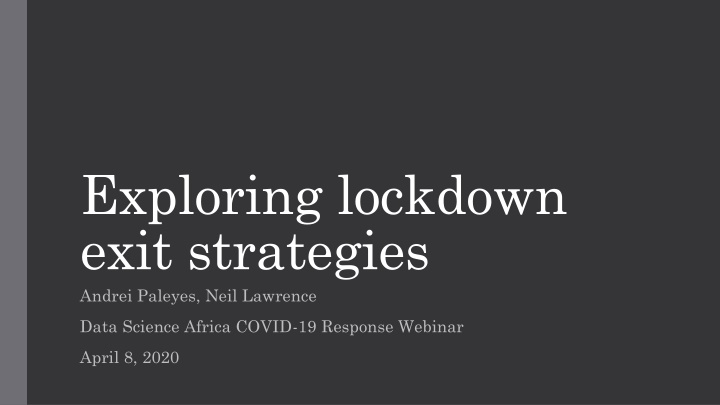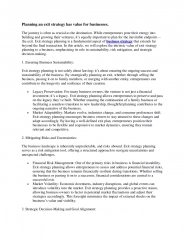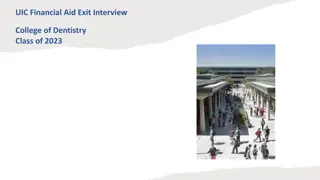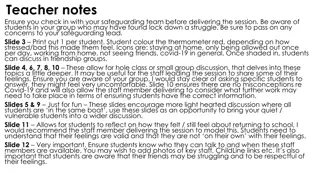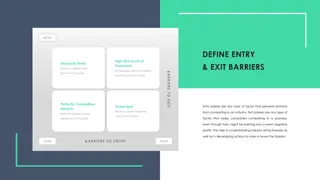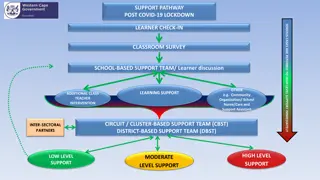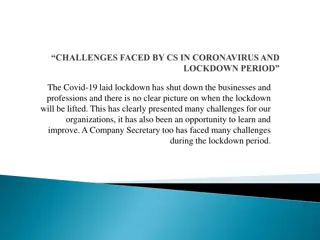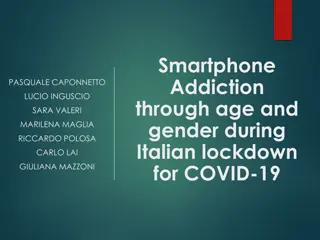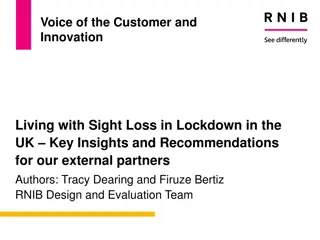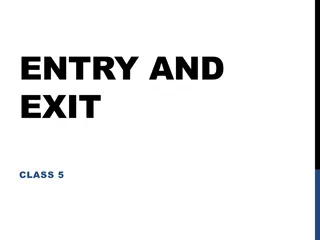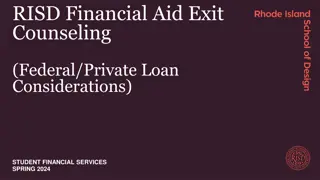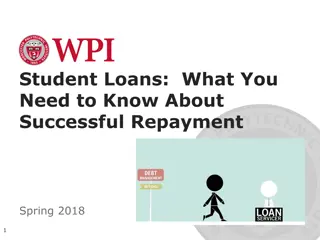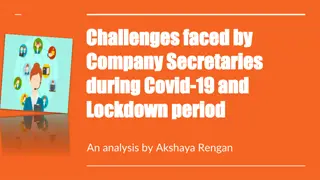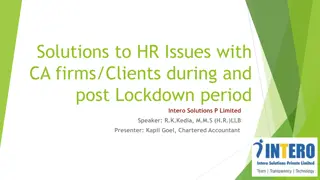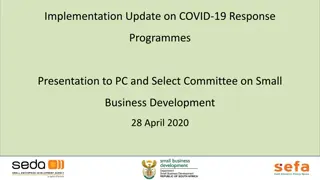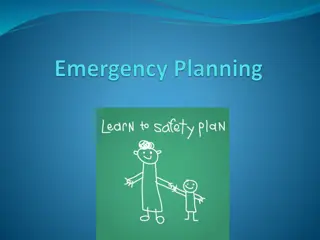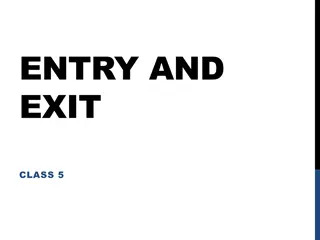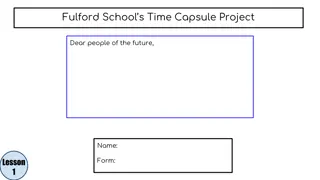COVID-19 Lockdown Exit Strategies: Insights and Challenges
As nearly 3 billion people globally face COVID-19 lockdown measures, the webinar explores strategies for safely exiting lockdowns. It delves into SEIR and revised SEIR models, government actions, and public responses, particularly focusing on South Africa's scenario. With discussions on vaccine distribution timelines and the complexities of finding balance between easing restrictions and preventing resurgence, the webinar provides a comprehensive overview of the situation and potential paths forward.
Download Presentation

Please find below an Image/Link to download the presentation.
The content on the website is provided AS IS for your information and personal use only. It may not be sold, licensed, or shared on other websites without obtaining consent from the author.If you encounter any issues during the download, it is possible that the publisher has removed the file from their server.
You are allowed to download the files provided on this website for personal or commercial use, subject to the condition that they are used lawfully. All files are the property of their respective owners.
The content on the website is provided AS IS for your information and personal use only. It may not be sold, licensed, or shared on other websites without obtaining consent from the author.
E N D
Presentation Transcript
Exploring lockdown exit strategies Andrei Paleyes, Neil Lawrence Data Science Africa COVID-19 Response Webinar April 8, 2020
WORLD ECONOMIC FORUM, 26.03.2020: Nearly 3 billion people around the globe under COVID-19 lockdowns.
World Health Organization: It would be historic to find a vaccine that can be distributed to all countries in 18 months to defeat the coronavirus.
SEIR model ? = ? ? ? Susceptible Exposed ? ? =? ? ? Infected ?? Removed ? ? = ?? ?? ? = ?? S + E + I + R = N ? transmission rate ? incubation ? recovery/death rate Kermack, W. O., McKendrick, A. G., 1927, "A Contribution to the Mathematical Theory of Epidemics"
Revised SEIR model ? = ?(?) ? ? Susceptible Exposed ? Infected ? =? ? ? ?? Removed ? D - public perception ? = ?? ?? ? = ?? ? = ??? S + E + I + R = N ?(?) transmission rate ? incubation ? recovery/death rate d proportion of severe cases/deaths He et al., 2013, Inferring the causes of the three waves of the 1918 influenza pandemic in England and Wales
Revised SEIR model, continued ? 1 ? ? ? = ?01 ? ? ?0 initial transmission rate of the disease ? governmental action strength ? intensity of public response Lin et al., 2020, A conceptual model for the coronavirus disease 2019 (COVID-19) outbreak in Wuhan, China with individual reaction and governmental action
Context: South Africa Population: 56.72 million Timeline: March 1 First case March 15 State of disaster declared March 23 National lockdown
Scenario 2: strict lockdown for 6 months Cost: R1680 billion (= 2019 budget)
Scenario 3: half-measure for 6 months Cost: R790 billion
Optimization setup Split 6 months into 3 week periods Each period has a separate quarantine strength Thus: optimization domain is 8 parameters Objective is the lowest possible peak Code: Bayesian Optimization via Emukit and economic constraint
Economic constraint Each day of lockdown costs money Daily loss the country incurs is the same The softer the measures the less the loss South Africa context R10 billion a day Limit is R900 billion (50% of 2019 budget) https://www.dailymaverick.co.za/article/2020-03-27-how-much-could-coronavirus-cost-the-sa-economy-a- preliminary-estimate/
Optimized scenario Cost: R810 billion
Imperial College, London; US federal plan; other experts: The COVID-19 pandemic will last 18 months or longer.
Thank you! ap2169@cam.ac.uk
